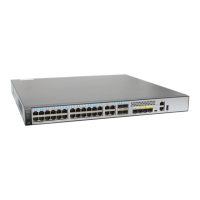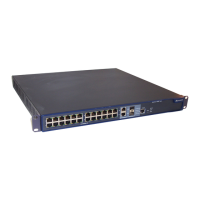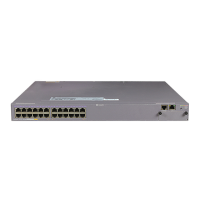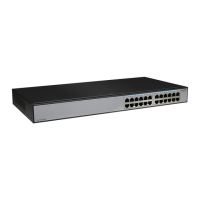Command Manual – MPLS
Quidway S8500 Series Routing Switches Chapter 2 BGP/MPLS VPN Configuration Commands
Huawei Technologies Proprietary
2-56
Parameter
source-addr: Source address of a Sham-link, a Loopback interface address with a
32-bit mask.
destination-addr: Destination address of a Sham-link, a Loopback interface address
with a 32-bit mask.
cost-value: Cost at Sham-link, in the range of 1 to 65535. By default, it is 1.
password: Specifies authentication in plain text at the interface, 8 characters at most. It
must be consistent with the authentication of a Sham-link peer.
keyid: Specifies the MD5 authentication identifier at the interface. The keyed is in the
range of 1 to 255. It must be consistent with the authentication string of Sham-link peer.
key: Specifies the authentication at the interface. keyid is from 1 to 255 and key is a
string up to 16 characters. It must be consistent with the authentication of a Sham-link
peer. When the display current-configuration command is executed, the system
displays the 24-character MD5 authentication in cipher text. You can also input a
24-character authentication in cipher text.
dead seconds: Specifies interval for the dead timer, in the range of 1 to 8192 seconds.
By default, it is 40 seconds. It must be consistent with the value of dead seconds for a
Sham-link peer router.
hello seconds: Specifies interval between Hello message transmission at the interface,
in the range of 1 to 8192 seconds. By default, it is 10 seconds. It must be consistent
with the value of hello seconds for a Sham-link peer router.
retransmit seconds: Specifies internal for LSA packet retransmission at the interface,
in the range of 1 to 8192 seconds. By default, it is 5 seconds.
trans-delay seconds: Specifies delay period for LSA packet transmission at the
interface, in the range of 1 to 8192 seconds. By default, it is 1 second.
Description
Use the sham-link command to configure a Sham-link.
Use the undo sham-link command to delete a Sham-link.
In the OSPF PE-CE connection, suppose that in an OSPF area there are two sites
which belong to the same VPN. They are connected to different PE routers and there is
an intra-domain OSPF link (Backdoor) between them. Though there may be other
routes connecting the two sites via PE routers, these routes are intra-domain routes,
and OSPF will first select those routes through the Backdoor link. Sometimes, users
desire to first select the routes through VPN Backbone. Hence it is required to establish
Sham-links between PE routers. In this case, the routes through VPN Backbone are of
the highest priority within the OSPF area.
If a Backdoor link (an OSPF link that does not pass the MPLS backbone) exists
between two PE routers and you want the data to be transported over the MPLS

